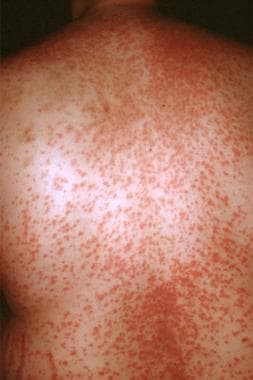Definisi
Porifiria adalah istilah yang digunakan untuk menjelaskan kelompok dari 8 gangguan yang memengaruhi kulit dan sistem saraf. Kebanyakan gangguan tersebut biasanya diturunkan (dari riwayat keluarga). Tidak semua porfiria diturunkan dari keluarga, seperti porfiria cutanae tarda (PCT) tidak selalu diturunkan. Porfiria sendiri meruapakan salah satu kondisi gangguan yang langka.
Gangguan dari porifira merupakan hasil dari penumpukan senyawa natural bernama porfirin yang diproduksi oleh tubuh Anda. Porfirin adalah senyawa esensial untuk fungsi dari darah, yaitu fungsi hemoglobin. Hemoglobin adalah protein pada sel darah merah yang terikat pada porfirin, mengikat zat besi dan membawa oksigen ke seluruh organ dan jaringan dalam tubuh Anda.
Kadar porfirin yang terlalu tinggi dapat menyebabkan permasalahan kesehatan. Secara umum, bila Anda memiliki porfiria yang memengaruhi kulit, dokter Anda akan menyebutnya sebagai porfiria kutan atau porfiria kulit, sedangkan bila Anda memiliki porfiria yang memengaruhi sistem saraf, dokter akan menyebutnya sebagai porfiria akut.
Penyebab
Semua tipe porfiria memiliki akar permasalahan yang sama, yaitu adanya permasalahan dari tubuh dalam membentuk senyawa yang disebut sebagai heme. Permasalahan tersebut menyebabkan kadar enzim khusus yang diperlukan dalam pembentukan heme.
Heme adalah bagian dari hemoglobin, yaitu protein di dalam darah yang bertugas membawa oksigen dari paruke seluruh tubuh Anda. Selain itu, heme adalah bagian dari protein dalam hati yang membantu organ hati bekerja dengan baik. Heme memiliki zat besi dan memberikan warna merah pada darah. Heme diproduksi di dalam organ hati dan sum sum tulang belakang serta banyak enzim yang bekerja pada proses tersebut.
Bila Anda memiliki porfiria, tubuh Anda tidak memiliki enzim yang mencukupi sehigga terjadi penumpukan senyawa yang disebut dengan porfirin yang membantu pembentukan heme.
Faktor Risiko
Porfiria adalah salah satu penyakit langka yang diturunkan sehingga Anda memiliki risiko lebih tinggi bila Anda memiliki anggota keluarga yang mengalami porfiria. Beberapa hal yang dapat meningkatkan faktor risiko seperti kebiasaan untuk mengkonsumsi alkohol, penggunaan esterogen pada wanita, gangguan hepatitis C, HIV dan gaya hidup merokok, berpuasa, infeksi, hormon menstruasi, stress dan berada dibawah matahari. Penggunaan jenis obat-obatan juga dapat memicu porfiria akut seperti barbiturat, antibiotik sulfat, pil KB, dan obat antikejang.
Gejala
Gejala dari porfiria bergantung dari tipe yang dialami. Gejala yang dialami bervariasi dari derajat sedang hingga berat. Terdapat beberapa pasien dengan pofiria tanpa gejala, tetapi pada beberapa pasien mereka bisa mengalami gejala yang dapat mengancam nyawa kecuali tidak segera diobati.
Pada pasien dengan porfiria kulit, bagian kulit bisa mengalami gejala seperti sensitif terhadap cahaya, gatal-gatal, pembengkakan pada kulit yang terpapar pada sinar matahari, abrasi, luka pada kulit, adanya luka gores pada yang terpapar sinar matahari yang menyebabkan kulit yang rapuh. Bagian yang sering mengalami porfiria seperti pada area tangan, lengan, telinga dan leher.
Pada porfiria akut dapat menyebabkan gejala yang memengaruhi sistem sarah. Secara umum, gejala yang mucul terjadi tiba-tiba dan berlangsung selama periode yang singkat. Gejala dari porfiria akut meliputi nyeri pada perut, dada, lengan, atau punggung, mual atau muntah, konstipasi (kesulitan untuk mengeluarkan buang air besar), ketidakmampuan kandung kemih untuk mengosongkan, gangguan mental seperti kebingungan dan halusinasi, kejang, dan kelemahan otot.
Diagnosis
Diagnosis dari porfiria dapat susah untuk ditegakkan. Hal ini disebabkan karena gejala dari porfiria dapat serupa dengan gangguan lain yang mirip. Dokter akan melakukan beberapa pemeriksaan seperti pemeriksaan fisik, pemeriksaan darah, pemeriksaan urine, pencitraan hingga pemeriksaan genetik bila perlu.
Bila dokter mencurigai Anda memiliki porfiria, dokter akan menyarankan melakukan pemeriksaan darah dan urine sebagai langkah pemeriksaaan awal untuk mendeteksi adanya porfirin dan prekursor porfirin lainnya. Pemeriksaan feses mungkin akan dilakukan untuk membantu konfirmasi diagnosa. Dokter juga dapat melakukan diagnosis dengan bantuan pemeriksaan genetik dari sampel darah. Pemeriksaan genetik ini sangatlah akurat dan dokter sering menggunakan pemeriksaan ini bila Anda diketahui memiliki anggota keluarga yang mengalami porfiria.
Tata Laksana
Perawatan dari porfiria bertujuan untuk megurangi gejala yang dialami. Perawatan untuk porfiria bergantung pada tipe dan gejala porfiria yang Anda miliki. Pada pasien dengan gejala porfiria kulit, menghindari sinar matahari menjadi kunci utama untuk perawatan. Dokter mungkin akan merekomendasikan Anda menghindari beberapa hal yang dapat memicu gejala seperti alkohol.
Pada beberapa pasien porfiria kutan juga dapat melakukan terapi flebotomi (ambil darah). Terapi ini mengambil darah sehingga mengurangi jumlah zat besi di dalam hati. Terapi perawatan untuk porfiria akut melibatkan intravena heme atau infus glukosa (menambahkan heme atau glukosa langsung ke dalam pembuluh darah). Terapi ini diharapkan menurunkan kadar porfirin atau prekursor porfirin yang dihasilkan pada hati.
Beberapa obat lain sedang diteliti lebih lanjut dan mungkin akan tersedia melalui pengujian klinis di kemudian hari. Selain itu, pada porfiria, perubahan gaya hidup seperti pola makan dengan mengkonsumsi makanan kaya karbohidrat dan kaya kalori juga membantu mengatasi gejala. Pada kondisi yang berat, pasien dengan kondisi akut porfiria mungkin memerlukan terapi lebih invasif untuk menangani gejala seperti transfusi darah, operasi hingga transplantasi hati dan sumsum tulang belakang.
Komplikasi
Pada beberapa kasus porfiria, komplikasi yang terjadi biasanya tidak dapat disembuhkan dan sulit untuk dikendalikan. Komplikasi yang terjadi dapat menyebabkan gagal organ hati, koma, batu ginjal, kelumpuhan, gagal panas, hingga luka pada kulit. Bila hal ini terjadi, tindakan yang dapat dilakukan seperti transplantasi organ hati dapat menjadi cara pengobatan penyelamatan nyawa. Pada beberapa tipe porfiria akut dapat menyebabkan kelemahan otot. Hal ini dapat menjadi permasalahan yang mengancam nyawa bila kelemahan otot dialami oleh otot yang berguna pada proses pernapasan. Kondisi ini perlu segera ditangani dengan masuk ke rumah sakit bila porfiria memengaruhi otot pernapasan.
Pencegahan
Porfiria dapat terjadi karena faktor genetik yang tidak dapat dicegah. Anda dapat menghindari pemicu yang dapat meningkatkan faktor risiko atau menyebabkan muncul gejala seperti merokok, mengkonsumsi alkohol dan paparan pada sinar matahari. Hindari sinar matahari langsung, menggunakan pakaian lengan panjang, topi dan pakaian pelindung ketika berativitas diluar. Beberapa obat - obatan juga perlu dihindari seperti obat golongan barbiturat, penenang, pil KB dan sedatif.
Kapan Harus ke Dokter?
Bila Anda mengalami gejala dari porfiria atau gejala yang Anda alami semakin memburuk, segera hubungi dokter Anda. Dokter Anda akan segera mencari penyebab dari gejala Anda dan memberikan rencana perawatan sesuai dengan kebutuhan Anda masing - masing. Lakukan pemeriksaan rutin untuk mengetahui kondisi Anda dan pengobatan Anda yang sudah efektif atau tidak. Informasikan pada dokter bila selama masa pengobatan, Anda mengalami gejala atau efek samping yang tidak diinginkan.
Mau tahu informasi seputar penyakit lainnya? Cek di sini, ya!
- dr Hanifa Rahma
Porphyria. (2018). Retrieved April 3, 2023, from https://my.clevelandclinic.org/health/diseases/17760-porphyria
Porphyria. (2020). Retrieved April 3, 2023, from https://www.mayoclinic.org/diseases-conditions/porphyria/symptoms-causes/syc-20356066#
Porphyria. (2020). Retrieved April 3, 2023, from https://www.niddk.nih.gov/health-information/liver-disease/porphyria
Porphyria. (2022). Retrieved April 3, 2023, from https://www.webmd.com/a-to-z-guides/porphyria-symptoms-causes-treatment
Porphyrias. (2020). Retrieved April 3, 2023, from https://www.healthline.com/health/porphyria












